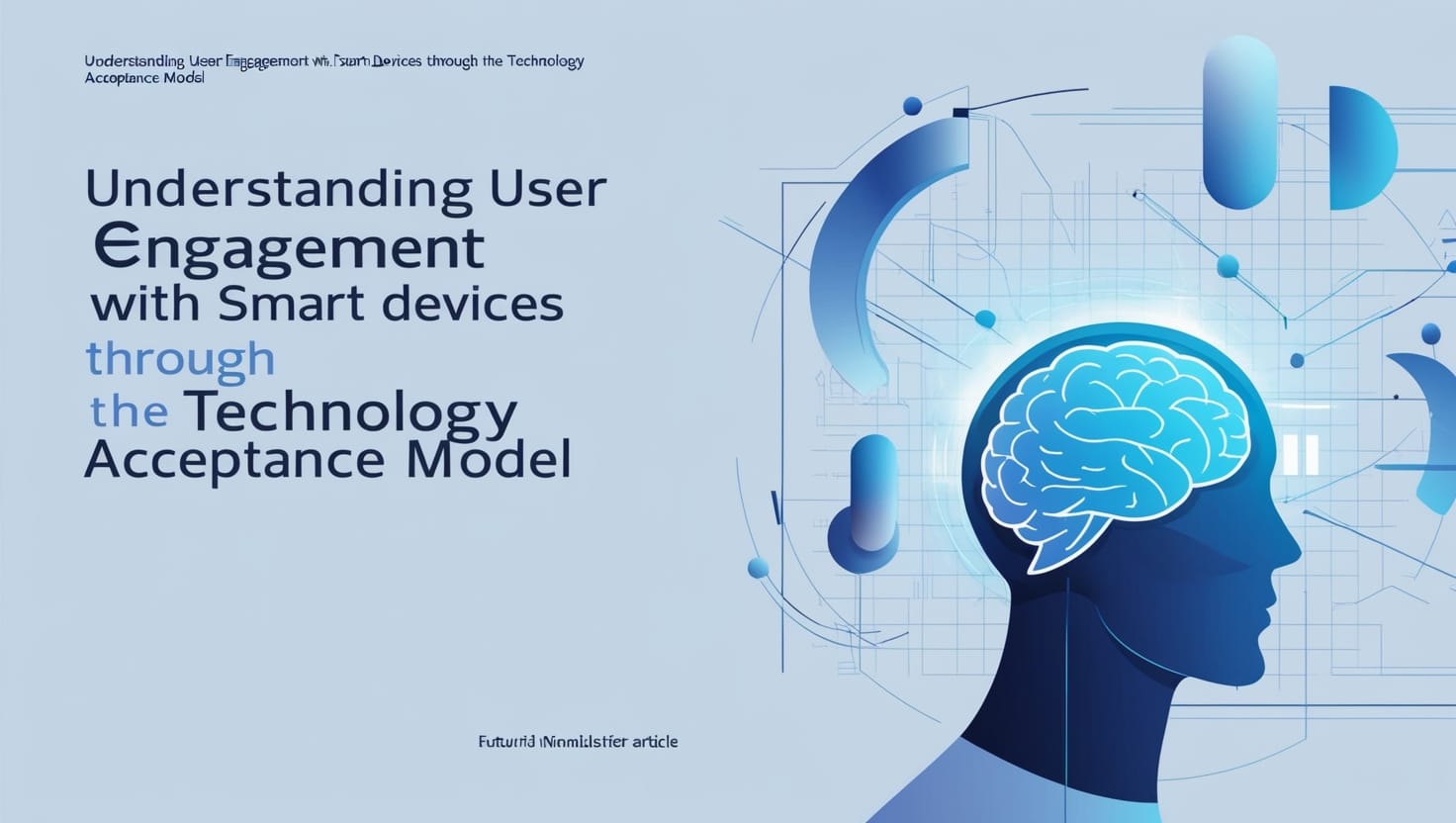
Understanding User Engagement with Smart Devices through the Technology Acceptance Model-In recent years, smart devices have permeated our daily lives, transforming how we interact with technology. From smart speakers and wearables to home automation systems, these devices offer unprecedented convenience and connectivity. However, understanding why users choose to engage with these technologies is crucial for developers and marketers. One insightful framework for examining this is the Technology Acceptance Model (TAM). This article explores user engagement with smart devices through the lens of TAM, highlighting its key components and implications.
What is the Technology Acceptance Model?
The Technology Acceptance Model, introduced by Fred Davis in 1989, provides a structured approach to understanding how users accept and use new technologies. TAM posits that two primary factors influence technology adoption:
- Perceived Usefulness (PU): The degree to which a person believes that using a technology will enhance their performance or quality of life.
- Perceived Ease of Use (PEOU): The extent to which a person believes that using a technology will be free of effort.
By analyzing these dimensions, we can gain valuable insights into user engagement with smart devices.
The Landscape of Smart Devices

Smart devices have revolutionized how we manage our homes, health, and daily tasks. From smart thermostats that learn user preferences to fitness trackers that monitor health metrics, these technologies offer tailored solutions to everyday problems. However, despite their potential, user engagement varies significantly across different devices and demographics.
Perceived Usefulness: Why Users Engage
1. Enhanced Convenience
One of the most compelling reasons users engage with smart devices is the convenience they offer. For instance, smart home assistants can control lighting, temperature, and entertainment systems through simple voice commands. This perceived usefulness significantly drives user engagement, as individuals seek technologies that simplify their lives.
2. Improved Efficiency
Smart devices often promise increased efficiency. For example, a smart coffee maker can be programmed to brew coffee at a specific time, ensuring users start their day with minimal effort. This kind of automation enhances the perceived usefulness of these devices, making users more likely to adopt and regularly use them. (Read More: AI Technology 2024: AI Tools Used in Communication and Collaboration)
3. Personalized Experiences
Another factor that enhances perceived usefulness is personalization. Many smart devices use AI to learn user preferences and habits, creating tailored experiences. For instance, fitness trackers can analyze activity data and provide personalized health recommendations. When users see tangible benefits aligned with their preferences, their engagement levels rise.
Perceived Ease of Use: The Key to Engagement

1. User-Friendly Interfaces
For users to engage with smart devices, they must find them easy to use. Intuitive interfaces that require minimal learning can significantly enhance perceived ease of use. Devices that are designed with user experience in mind—featuring simple navigation, clear instructions, and responsive controls—encourage more frequent use.
2. Seamless Integration
The ability of smart devices to integrate with existing technology is also crucial. Devices that easily connect with smartphones, tablets, and other smart systems create a more cohesive user experience. This seamless integration lowers the barriers to entry, making users more likely to engage with the technology.
The Role of Social Influence
Social influence plays a vital role in the Technology Acceptance Model, especially regarding smart devices. Consumers are often influenced by peer recommendations, reviews, and social media discussions.
1. Peer Recommendations
When users observe friends and family successfully using smart devices, it enhances their perceptions of both usefulness and ease of use. Positive word-of-mouth can significantly impact engagement levels, encouraging others to adopt similar technologies.
2. Online Reviews and Communities
Online reviews and community forums also play a critical role in shaping perceptions. Consumers often rely on the experiences of others to inform their decisions. When users see that a device has been positively received, it boosts their confidence in its usefulness and ease of use, further driving engagement. (Read More: Adapting to Change: The Role of the Technology Acceptance Model in Digital Transformation)
Challenges to User Engagement
Despite the advantages of smart devices, several challenges can hinder user engagement.
1. Privacy and Security Concerns
As smart devices often collect and process personal data, concerns about privacy and security can deter users. If individuals perceive that their data is at risk, their willingness to engage with these technologies diminishes. Manufacturers must address these concerns transparently to build trust with users.
2. Complexity and Technical Issues
While many smart devices are designed to be user-friendly, technical issues can still arise. Complicated setup processes or connectivity problems can frustrate users, leading to disengagement. To maintain user interest, companies must prioritize customer support and ensure that devices are reliable. (Read More: How the Technology Acceptance Model is Shaping User Adoption in 2024)
Future Directions in User Engagement

Looking ahead, the Technology Acceptance Model will continue to provide valuable insights into user engagement with smart devices.
1. Continuous Improvement Based on Feedback
Developers should prioritize gathering user feedback to enhance both perceived usefulness and ease of use. Regular updates and improvements based on consumer input can help maintain engagement levels and adapt to changing user needs.
2. Education and Awareness Campaigns
Educating consumers about the benefits and functionalities of smart devices is essential. Awareness campaigns can demystify technology, making it more accessible and appealing. When users understand how smart devices can improve their lives, they are more likely to engage with them.
Conclusion article Understanding User Engagement with Smart Devices through the Technology Acceptance Model
Understanding user engagement with smart devices through the Technology Acceptance Model provides essential insights for developers, marketers, and consumers alike. By focusing on perceived usefulness and ease of use, companies can design more engaging products that meet user needs. As smart technology continues to evolve, fostering engagement through user-friendly designs, seamless integration, and transparent practices will be key to ensuring that these devices enhance our daily lives effectively.




